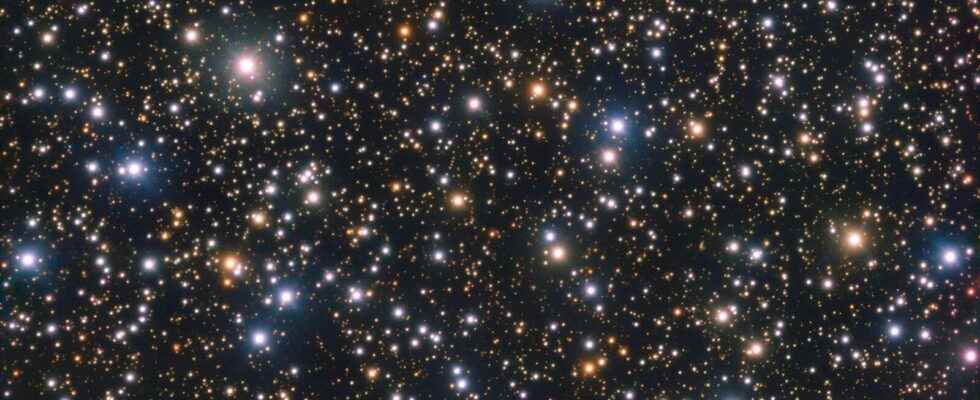Red, blue, white … The stars in the sky do not all have the same color. These differences are mainly explained by their temperature.
You will also be interested
[EN VIDÉO] How do the stars evolve? The stars are born, live and die. Their history is determined by their initial mass, which decides the thermonuclear reactions that will take place there and the types of nuclei they will synthesize before ending their lives as white dwarfs, neutron stars or black holes.
From Earth, the stars more or less all seem a little white. As they are very distant, their brightness is weak, and theeye is therefore in this case not very sensitive to colors. But when we observe the sky with a telescope or a telescope for example, we notice that some stars draw on red, blue, or yellow. In the constellation of Orion for example, the star Betelgeuse appears red, while the cluster of Pleiades, in the constellation taurus, the stars are rather bluish.
A star is a ball of gas that emits heat. Like any matter hot, she will radiate from the light. At the beginning of the XXe century, Ejnar Hertzsprung and Henry Norris Russell have shown that there is a close relationship between the color of a star and its temperature : Contrary to intuition, the hottest stars are blue and the coldest are red. Kind of like a bar iron : if you heat it up a little, it turns red, but if you continue to heat it for a long time, it will turn white or even blue once melted. In Universe, we thus find stars ranging from 3,000 Kelvin at 30,000 Kelvin. In fact, stars do not emit light in one wave length. White light, for example, is a superposition of all the colors of the spectrum, and when the star appears red, it means that it emits a “peak” in the red.
Spectral analysis of a star
The spectral analysis of a star allows us to derive a great deal of information about its mass, its composition, its age or its speed. The relative height of the lines indicates for example the degree ofionization of a gas, the shape of the lines tells us about the pressure, the electric field and the turbulence, and a particular shift of the lines, called the Zeeman effect, is a magnetic field indicator. Likewise, the spectral shift towards the red where blue tells us how fast the star is moving via the’Doppler effect, which makes the frequency of the light wave increases or decreases depending on the distance from the observer.
Interested in what you just read?
.
fs4
